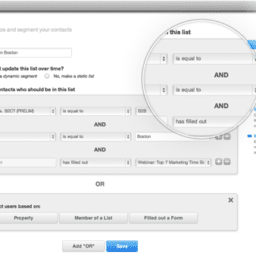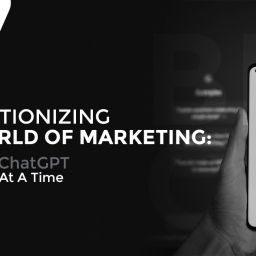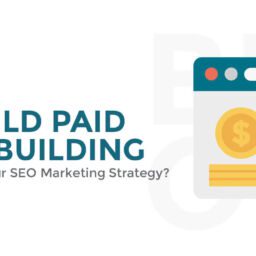
Guerrilla marketing “works because it’s simple to understand, easy to implement and outrageously inexpensive,” says Jay Conrad Levinson, the man who coined the phrase.
Consumers have grown immune to big budget advertising, but marketers that expend a bit of time and effort — rather than piles of money — can generate effective results with inexpensive, small-scale stunts.
This post by hubspot is going to revisit guerrilla marketing campaigns that fall into all three of those camps. The flops, the total flops, and the rare successes. And whatever the outcome, if these campaigns have one thing in common, it’s that they’re all totally shocking.
1) The Blair Witch Project Pre-Release Campaign
Whenever someone asks me what guerrilla marketing is, this is the example I cite — because who could forget The Blair Witch Project? A few college film students created a super low budget horror flick and turned it into a national blockbuster by staying one step ahead of the public’s perception of the urban legend they had manufactured. That’s right, this guerrilla marketing campaign created an actual urban legend surrounding the Blair Witch, thanks to a website that thousands of gullible early adopters bought into along with some posters that expertly blurred the line between fantasy and reality.
Even now, some people are still swearing by the existence of the Blair Witch even as moviegoers came in droves to catch the revolutionary flick.
2) Halfway, Oregon renamed “half.com, Oregon” For One Year
1999 was a big year for guerrilla stunts. In December of 1999, half.com propositioned the small Pacific town of Halfway, Oregon to change its name to half.com, Oregon, in exchange for $110,000, 20 new computers for its schools, and other undisclosed financial terms. While the name change was never legally solidified, the town accepted unofficially, and signs were posted at the town’s borders welcoming passers-by to “America’s First Dot-Com City.” The campaign certainly generated a lot of press, and while we can’t be sure, we imagine it must have generated some site traffic, too. Half.com ended up being purchased by eBay, and Halfway, Oregon ended up demanding over $530,000 in unpaid funds from eBay in 2004.
3) The AC Milan vs. Real Madrid Heineken Stunt
It’s no secret that Italian men love their football. In 2010, Heineken pulled off a risky stunt that nearly left over 1,000 Italians trapped at an opera and poetry event their significant others, friends, and even journalists talked them into attending — making them miss the big game. As the event began, clues started being dropped that something was amiss, until the big game, AC Milan vs. Real Madrid, was finally revealed on a huge screen, sponsored by Heineken. To the delight of the patrons, Heineken beers were immediately served, and the night was declared a success. Social media buzzed about the event for days, declaring Heineken the hero who rescued the people from the clutches of high art and returned them to football.
4) The Belarus Free Speech Teddy Bear Drop
This one made headlines at the beginning of August 2012. In what was initially described as a prank carried out by Studio Total, a Swedish PR agency, pilots in teddy bear masks airdropped parachute-clad teddy bears into Belarus. The bears carried with them messages of free speech and human rights, and as such, they were not taken lightly by Belarusian officials. They made a bold statement about a very specific idea, and got people’s attention in an unexpected and memorable way. This one stirred up the controversy, too, resulting in the firing of two generals and the arrests of two Belarusian citizens.
5) The Aqua Teen Hunger Force Lite Brite Bomb Scare of 2007
While this certainly earned Aqua Teen Hunger Force and Interference, Inc. a whole bunch of publicity, it was likely not the kind they were looking for — especially not when one of the headlines reads “Two held after ad campaign triggers Boston bomb scare.” Yeah … somehow, I doubt “bomb scare” was the memory Interference, Inc. was going for with their guerrilla campaign. But in 2007, that’s exactly what happened to Interference, Inc., the marketing team who tried to execute a 10-city Lite Brite extravaganza to promote the new Aqua Teen Hunger Force movie. Lite Brite works of art, shaped like characters from the movie, were attached to highly-traveled structures like bridges and overpasses. In Boston, the Lite Brite was placed in a busy transportation hub and was mistaken for a homemade bomb. A massive evacuation was conducted and Boston police got involved, suspecting terrorism.
6) Vodafone Streaks Through Telstra Stadium
Much like Italians love their football, Australians love their rugby. Unlike the Heineken stunt, however, Vodafone’s foray into guerrilla marketing at sporting events didn’t end up with such positive buzz. During the 2002 Bledisoe Cup match, two streakers appeared on the field. As streakers do, they scurried across the field wearing nothing … except Vodafone logos painted across their backs. Their presence was largely disruptive, not exciting, and may have caused a game-winning kick to be missed, resulting in many angry fans. Vodafone took an additional risk with this stunt by performing it in Telstra Stadium. Telstra is one of their main competitors in the Australian phone market. While the stunt certaily got Vodaphone a lot of press, most of it was negative.
7) IKEA’s Trip to Bondi Beach
What are the three things you should bring with you to an Australian beach? Sunglasses, sunscreen, and a book to read as you relax in the sun. IKEA chose to celebrate the 30th birthday of one of its most popular bookshelving units, the Billy, by setting up a bright red one in the sand of Bondi for just one day. Fully stocked with literary classics and summer reads alike, beachcombers arrived to discover fresh new reading options that they could take in exchange for the ones they brought. There was also an option to donate to the Australian Literacy and Numeracy Foundation. IKEA left its name written in the sand, and garnered quite a bit of positive press as a result of the one-day-only stunt.
8) Pandas Invade Paris
In 2008, there were 1,600 wild pandas left in the world. In an attempt to raise awareness, the World Wildlife Foundation curated the creation of 1,600 hand-made papier mache pandas, which were placed in various locations across Paris — first in front of Hotel Ville, then across the city. It was a striking display that seemed, at first, quite vast, but hit home quickly as viewers realized that every panda in their sight represented the only pandas remaining in the wild. The campaign was political, emotional, and talked about for years afterwards.
9) OBEY
This campaign was started by then-student at Rhode Island School of Design Shepard Fairey. He created a stealth guerrilla marketing campaign featuring stickers, posters, and stencils of a character called Andre the Giant. There were two main variations: one with a close-up of a sullen face with the tagline “OBEY” and one announcing to the world that “Andre the Giant Has A Posse.” His aim was not to sell a product or service, but to make people aware of stealth advertising campaigns — and, in disseminating his stickers across cities in high volume, aware of how frequently they are bombarded with marketing. Using a tagline like “obey” heightened the impact of the campaign: unwanted advertising is everywhere, and we are expected to obey its commands. At least … that’s what outbound marketers want you to think! But you know better than that 😉
Are there any other extreme guerrilla marketing campaigns we should have included on this list? Share them in the comments!
Blog source : Hubspot.











